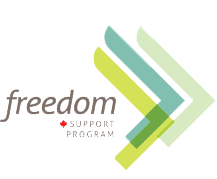00:11.099
Hi there. Thanks for watching.
00:13.203
Today we’re going to show you how to properly inject a dose of DUPIXENT® (dupilumab) using the single-dose pre-filled pen.
00:21.320
I know you’ve already learned how to give an injection with your healthcare provider.
00:26.446
We are here to guide you through your first at-home experience.
00:30.459
First thing we’ll go over is what supplies to gather, how to prep the injection area,
00:35.239
how to inject the dose and discard your single-dose pre-filled pen.
00:41.728
If you haven’t yet read the instructions for use, located in your DUPIXENT® treatment package, pause the video and take a look.
00:49.194
It has step-by-step instructions, which I will go through with you today.
00:54.113
It’s important to read all of the instructions carefully before using the pre-filled pen.
01:00.322
Let’s take a closer look at the pre-filled pen.
01:03.571
I found it helpful to review the different parts of the pre-filled pen
01:07.812
like the cap, the window, and the needle cover before handling the pre-filled pen itself.
01:22.079
OK, it’s time for your DUPIXENT® injection. Are you ready?
01:24.837
Yeah.
01:26.087
Feel free to watch us and follow along as I give an injection.
01:30.625
Depending on your dose, your box of DUPIXENT® may be a different colour. This is the box for the 300 mg dose.
01:39.022
Before we start, here are some guidelines.
01:42.652
Keep the pre-filled pen and all medicines out of the reach of children.
01:47.863
Keep unused pre-filled pens in the original carton
01:50.285
and store in the refrigerator between 2ºC to 8ºC, or 36º to 46ºF.
01:59.578
To begin, take your medication out of the refrigerator.
02:06.126
Take one pen out of the packaging by holding the middle of the pen body.
02:11.240
Now, let’s check the label on the pen to ensure that the medication and dosage strength are correct,
02:16.284
and the expiration date has not passed.
02:19.854
Do not use the pen if the expiration date has passed.
02:23.802
If the dosage strength or expiration date isn’t right, contact your pharmacy.
02:30.416
Next take a look at the medicine through the viewing window.
02:34.222
The liquid inside should be clear and colorless to pale yellow.
02:38.955
You may see an air bubble. This is totally normal.
02:43.472
Do not inject DUPIXENT® if the liquid inside is discoloured, cloudy, or contains visible flakes or particles.
02:51.568
Do not use the pre-filled pen if the window is solid yellow.
02:56.526
Do not use the pre-filled pen if it’s been damaged.
03:00.763
Do not use the pre-filled pen if the cap is missing or not securely attached.
03:10.114
If you have any questions about whether the pen is ok to use, please call the Freedom support program, or your healthcare provider.
03:19.205
If you have an unused pre-filled pen, return it to the refrigerator in the original carton to protect it from the light.
03:29.408
Lay the pre-filled pen on a flat surface and let it naturally warm to room temperature.
03:38.790
Do not freeze or heat the pre-filled pen.
03:42.549
Do not put the pre-filled pen into direct sunlight.
03:47.505
Throw away any pre-filled pen that’s been left at room temperature for more than 14 days.
03:53.575
On that note, if you ever need to remove a DUPIXENT® carton from the refrigerator,
03:57.713
it’s a good idea to write down the date of removal in the space provided on the outer carton,
04:03.397
so that you can remember to use DUPIXENT® within 14 days.
04:10.005
Do not shake the pre-filled pen at any time.
04:16.330
As the pen warms up, let’s gather some additional materials you’ll need for the injection.
04:22.716
You’ll need a cotton ball or gauze, an alcohol wipe, and a puncture resistant disposal container.
04:32.495
If you don’t have a puncture resistant disposal container, call your pharmacy,
04:36.282
the Freedom support program,
04:38.060
or your healthcare provider to request a puncture-resistant disposal container.
04:44.998
Now take your supplies to an area where you and your child can sit comfortably.
04:50.239
I prefer the comfort of our living room couch. You might prefer the bathroom or your bedroom for privacy.
04:58.075
We’re almost ready to inject DUPIXENT®.
05:00.106
First, let’s wash our hands thoroughly with soap and water.
05:06.146
Next, let’s choose an injection site.
05:09.340
Both the stomach and thigh are acceptable except for the 5 centimeters or 2 inches around the belly button.
05:16.533
The outer area of the upper arm is also an option since you are giving the injection to someone,
05:21.840
but not if you are self-injecting.
05:26.483
Be sure to choose a different site each time you inject DUPIXENT®.
05:32.141
Do not inject through clothes.
05:33.681
Do not inject into skin that is tender, damaged, bruised or scarred.
05:43.013
Now clean the skin with the alcohol wipe.
05:53.104
Do not touch the injection site again or blow on it before the injection.
05:58.038
Let your skin dry before injection.
06:02.582
Pick up the pen by holding the middle of the pen body, with the needle pointing away from you.
06:08.386
With the other hand, pull the cap straight off.
06:12.610
Once you’ve removed the cap, do not put it back on.
06:16.612
Do not twist the cap off.
06:18.926
Do not remove the cap until you are ready to inject.
06:22.496
Do not press or touch the needle cover with your fingers. The needle is inside.
06:27.119
Do not try to put the cap back on once you’ve removed it.
06:32.561
Inject the medicine right away after removing the cap.
06:36.727
Place the yellow needle cover on the skin at approximately a 90-degree angle.
06:41.749
Make sure you can see the injector window.
06:47.271
Press down and hold the pen firmly against the skin until you can no longer see the Needle Cover.
06:54.219
There may be a “click” when the injection starts.
06:56.638
As you hold the pen firmly against the skin, the injector window will start to turn yellow.
07:04.446
The injection can take up to 20 seconds.
07:07.559
You may hear a second click.
07:10.770
Check that the entire Window has turned to yellow before removing the pen.
07:15.437
Slowly count to 5, and then lift the pen up straight off the skin.
07:21.051
That’s it! You’re done.
07:24.983
If the Window does not turn fully Yellow,
07:27.366
remove the pen and call your healthcare provider or Freedom support program nurse.
07:33.784
Do not give a second dose without speaking to your healthcare provider.
07:40.799
Lightly press a cotton ball or gauze on the injection site if you see any blood.
07:46.617
You can also cover the site with a bandage.
07:50.030
Your child should not rub their skin after the injection.
07:54.049
Be sure to put the used pen and its cap into a puncture-resistant disposal container
07:58.910
right away after use.
08:02.283
Do not re-use the pre-filled pen.
08:05.692
Do not dispose of pre-filled pens in your household trash.
08:10.726
Do not recycle your used puncture resistant container.
08:15.917
Follow your local guidelines and ask your pharmacy or healthcare provider for the appropriate way to dispose of your used pen.
08:25.608
Be sure to keep track of the injection date and site.
08:30.495
Thank you for joining us today.
08:32.154
Remember you can rewatch this video as often as you like to refresh your memory.
08:37.467
Contact your healthcare provider or the Freedom support program with any questions or concerns.
![]()







